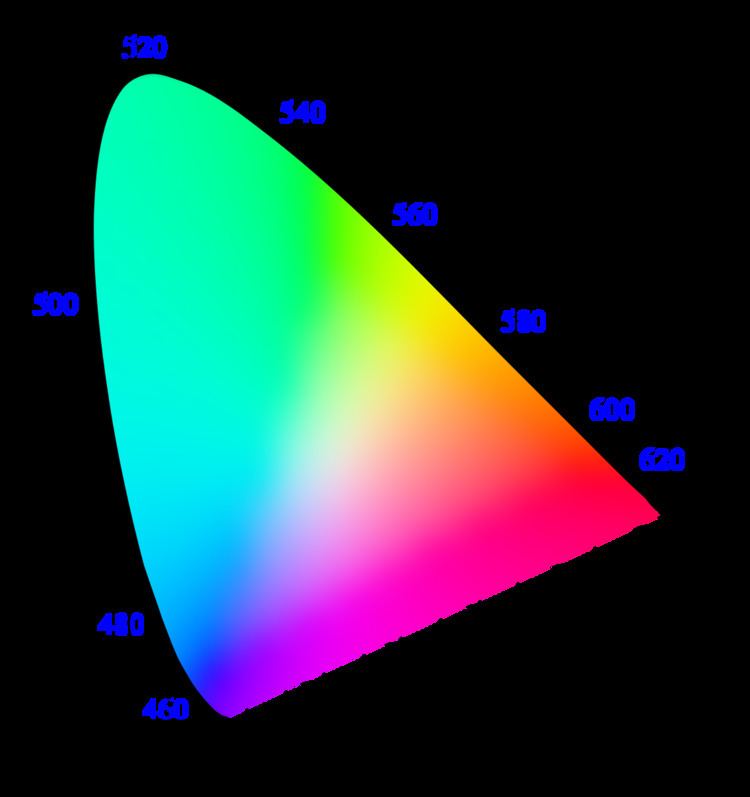 | ||
A spectral color is a color that is evoked by a single wavelength of light in the visible spectrum, or by a relatively narrow band of wavelengths, also known as monochromatic light. Every wavelength of visible light is perceived as a spectral color, in a continuous spectrum; the colors of sufficiently close wavelengths are indistinguishable.
Contents
The spectrum is often divided into named colors, though any division is somewhat arbitrary: the spectrum is continuous. Traditional colors include: red, orange, yellow, green, blue, and violet.
The division used by Isaac Newton, in his color wheel, was: red, orange, yellow, green, blue, indigo and violet; a mnemonic for this order is "Roy G. Biv". In modern divisions of the spectrum, indigo is often omitted.
One needs at least trichromatic color vision for there to be a distinction between spectral and non-spectral colours: trichromacy gives a possibility to perceive both hue and saturation in the chroma. In color models capable to represent spectral colors, such as CIELUV, a spectral color has the maximal saturation
In color spaces
In color spaces which include all, or most spectral colors, they form a part of boundary of the set of all real colors. If luminance is counted, then spectral colors form a surface, otherwise their locus is a curve in a two-dimensional chromaticity space.
Theoretically, only RGB-implemented colors which might be really spectral are its primaries: red, green, and blue, whereas any other (mixed) color is inherently non-spectral. But due to different chromaticity properties of different spectral segments, and also due to practical limitations of light sources, the actual distance between RGB pure color wheel colors and spectral colors shows a complicated dependence on the hue. Due to location of R and G primaries near the almost "flat" spectral segment, RGB color space is reasonably good with approximating spectral orange, yellow, and bright (yellowish) green, but is especially poor in reaching a visual appearance of spectral colors between green and blue, as well as extreme spectral colors. The sRGB standard has an additional problem with its "red" primary which is shifted to orange due to a trade-off between purity of red and its reasonable luminance, so that the red spectral became unreachable. Some samples in the table below provide only rough approximations of spectral and near-spectral colors.
CMYK is usually even poorer than RGB in its reach of spectral colors, with notable exception of process yellow, which is rather close to spectral colors due to aforementioned flatness of the spectral locus in the red–green segment.
Note that spectral color are universally included to scientific color models such as CIE 1931, but industrial and consumer color spaces such as sRGB, CMYK, and Pantone, do not include any of spectral colors.
Table of spectral or near-spectral colors
Most of the colors listed do not reach the maximal (spectral) colorfulness, or are not usually seen with it, but they can be saturated enough to be perceived closely to their dominant wavelength spectral colors. Ranges of wavelengths and frequencies are only approximate.
Wavelengths and frequencies in gray indicate dominant wavelengths and frequencies, not actual range of spectrum composing a specified color, which extends farther to both sides and is averaged by receptors to give a near-spectral appearance.
Non-spectral colors
Among some of the colors that are not spectral colors are:
